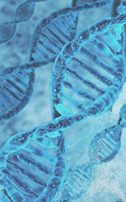Haplogroups
Your Earliest Origins
by Joelle Steele
 If you’re working on your family genealogy, then DNA can be a great step toward better understanding where your earliest ancestors came from. Some DNA information dates back thousands — and even hundreds of thousands of years. This can be helpful in determining probable countries of origin from which your ancestors migrated over time. This genetic information is classified into “haplogroups.”
If you’re working on your family genealogy, then DNA can be a great step toward better understanding where your earliest ancestors came from. Some DNA information dates back thousands — and even hundreds of thousands of years. This can be helpful in determining probable countries of origin from which your ancestors migrated over time. This genetic information is classified into “haplogroups.”
A haplogroup is a genetic population that shares a common maternal or paternal ancestor through descending lines of male or y--DNA (passing from father to son) and female or mtDNA (passing from mothers to daughters and sons).
Haplogroups are assigned letters and numbers. But, over time, these large haplogroups broke down into newer haplogroups that indicate more specific areas of origin. Here are some general origins of haplogroups by letter.
mtDNA haplogroups A, B, C, and D are common in America.mtDNA haplogroups B, C, D, M, and Y are common in southern and eastern Asia.
mtDNA haplogroup H is found in almost half of all European people, and is also found in northern and central Asia, as well as northern Africa and the Middle East.
mtDNA haplogroups L1, L2, and L3 are the most common groups found in Africa.
mtDNA haplogroups N and P are common in Oceania (central and south Pacific ocean).
y-DNA haplogroup R1 is the most common in Europe.
y-DNA haplogroup J is most common in the Middle East.
y-DNA haplogroups A and E are common in Africa.
y-DNA haplogroups C, L, and O are common in Asia and Oceania.
y-DNA haplogroup Q is common in America.
Every person has two haplogroups, one from your mother’s line (mtDNA) and one from your father’s line (y-DNA). But, if you are a female, you will have to find out your y-DNA haplogroup from a male family member such as a brother, father, uncle, grandfather, etc., as y-DNA is only passed from father to son. Your membership in a haplogroup is determined by the SNPs (single nucleotide polymorphisms) present in your DNA.
My client John's mtDNA is in haplogroup H7a1. The H haplogroup is the largest European maternal lineage. The H7a haplogroup originated in Chalcolithic Poland, dating to the Corded Ware culture ca. 3000BC-2350BC and ending in the early Bronze Age. John's y-DNA is in haplogroup R-P311, a subclade (subgroup) of R1b and now known as R-M269, the most common haplogroup found in Europe. It is believed to have originated circa 2800 BC with the non-Iberian Bell Beaker groups in Western Europe, ranging from Great Britain and Ireland in the north, to the south to Sardinia, Sicily, and parts of northwestern Africa.
My mtDNA Haplogroup is U5b2a1a. Haplogroup U5b is one of two primary branches of one of the oldest haplogroups in Europe, U5, which is believed to have spread through Europe about 30,000 years ago. U5b is traced to a woman who lived about 23,000 years ago during the ice age, when mile-thick glaciers covered the northern half of Europe. People were confined to small parts of the southern part of Europe. After the ice age, humans repopulated Europe and spread branches of U5b widely. My specific haplogroup, U5b2a1a, traces back to a woman who lived about 10,500 years ago (or about 400 generations ago). And I thought my earliest Finnish ancestors – my 14th and 15th great-grandfathers from the 15th century – were ancient!

